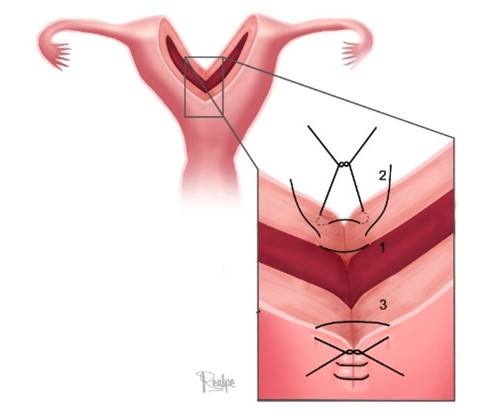Microsurgical technique for reconstruction of Hemi-uterus with non-communicating rudimentary uterine horns
Keywords:
Microsurgical, Mullerian malformations, Hemi-Uterus, FertilityMain Article Content
Case description:
Three patients diagnosed with Hemi-uterus with non-communicating functional rudimentary cavity are reported.
Clinical findings:
Adolescent patients with disabling pelvic pain during menstrual periods, depressive states, and functional disability secondary to pain.
Treatment and outcome:
Reconstruction of Hemi-uterus with non-communicating functional rudimentary cavity using a microsurgical technique, without the need for non-communicating horn resection. The patients were assessed at the 1st, third, and sixth months, showing a marked improvement in their dysmenorrhea. In addition, there was an improvement in the depressive state; there was no change in the volume of her menstrual bleeding, and one of these patients achieved pregnancy with normal prenatal control and cesarean delivery, obtaining a full-term newborn without complications.
Clinical Relevance:
Description of a novel microsurgical technique for the management of the hemi-uterus with a non-communicating functional rudimentary cavity, which could benefit not only the reduction of associated symptoms but could also become an alternative to improve fertility.
Downloads

This work is licensed under a Creative Commons Attribution-NonCommercial 4.0 International License.
The copy rights of the articles published in Colombia Médica belong to the Universidad del Valle. The contents of the articles that appear in the Journal are exclusively the responsibility of the authors and do not necessarily reflect the opinions of the Editorial Committee of the Journal. It is allowed to reproduce the material published in Colombia Médica without prior authorization for non-commercial use


 https://orcid.org/0000-0003-1308-8083
https://orcid.org/0000-0003-1308-8083